A look at some of the Martyrs of the communist takeover of Mexico in the 1920s.
From The Remnant
By Theresa Marie Moreau
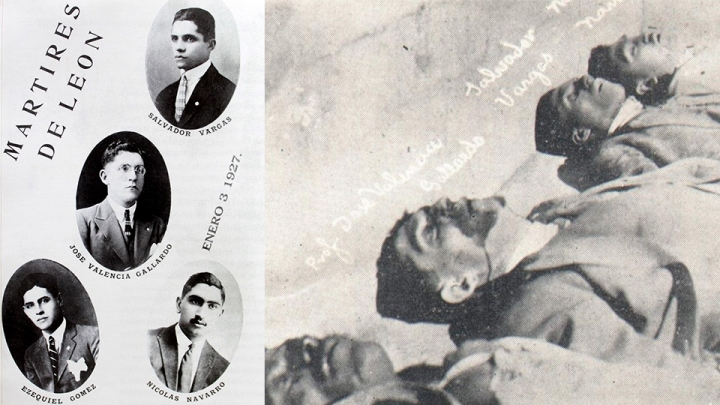
I expect to die in bed, my successor will die in prison and his successor will die a martyr in the public square. His successor will pick up the shards of a ruined society and slowly help rebuild civilization, as the Church has done so often in human history. ― Cardinal Francis George
SOCIALIST REVOLUTIONARIES GRABBED control of Mexico.
Religious persecution descended upon the country’s Catholics who resisted the atheistic ideology pushed in legislation concocted by political authorities scheming to outlaw the Church and Her traditions.
As the Catholic faithful cried for religious liberty and freedom from the oppressive regime, the Mexican episcopate issued a public statement about the takeover of the country by Bolshevism, the revolutionary Socialist ideology of the Bolshevik Party founded, in 1903, by Vladimir Lenin (1870-1924). In Russia – following the Bolshevik-led October 1917 Revolution and the ensuing Russian Civil War (1917-23) – the Bolshevik Party “progressed” into the Communist Party, which led the brutal, Christophobic, single-Party regime in what would become known as the Union of Soviet Socialist Republics (1922-91).
The Mexican bishops rang alarm bells – not only about the future of the country’s Catholics, but also of its Christian civilization – in their pronouncement, published in the New York Times, on November 24, 1926:
“There are two factions in the fight, Christianity and Bolshevism. The defense of Christian civilization is based upon religion, the sanctity of matrimony, private property, sane liberty, as against the Communistic Utopias of Socialism, free love and the subjection of religion to the State.
“For this reason, the problem that Mexico has again raised with its Constitution and laws is of world interest, as trying to abolish the Christian civilization of a daughter of the Church, which for 20 centuries gave life to Europe and to which America owes its greatness.
“All this explains why the Pope is interested in this problem. The defense of religious liberty, which Catholics in Mexico claim, is not only in our favor, but affects conscience, the press, the teaching profession, for all, without distinction of creed.
“Enough has been read into the Constitution of 1917 and Mexican laws to convince all that not only liberty of religion, but the liberty of many other things, which for the basis of civilization, are gravely endangered.
“For Mexicans, the encyclical [“Iniquis Afflictisque: Encyclical of Pope Pius XI on the Persecution of the Church in Mexico,” November 18, 1926] of the Pope is a matter of profound gratitude, as much for the interest which he shows in our country as for the inspiration given to Catholics during this prolonged violent situation.
“The Pope, finally, in this statement, demonstrates the right he has to intervene in the religious affairs of the Catholic Church in any country, and at the same time indicates to our governors the road of concord and conciliation. Our governors ought to amend the laws, in spite of the obligation which they have to do so, as much for justice to Catholics, even though they were a small minority, as for the majority of citizens who request amendments.”
In Mexico, the Socialist politicians, their followers and their supporters used Bolshevism as the Marxist-Leninist, anti-Christian model of the Dictatorship of the Proletariat to guide them in an active Revolution of the Vanguard against their own people, to destroy social order. They agitated Communists against Christians and Collectivists against Individualists.
It is important to understand that one of the many reasons why Christianity created such a positive force in the development of Western Civilization and is unique in the entire history of mankind is because of Individualism: the principle of Christian ideology that human rights are intrinsic to the human being, granted by God, and that each human is sacred, with its own special part in the natural order of the world, per the Will of God, the Author of Nature, the Universal Cause of All Things, the First Intellectual Being.
Equally important is to understand the anti-Christian, atheistic ideology of Collectivism – the oppressive Socialist theory of rule – that denies individual rights and insists that rights are granted by the State, which is ruled by a politically elite vanguard headed by a “great” and “glorious” leader who speaks for the “People.” For collectivists, the group is greater than the individual, who must be crushed and sacrificed for the “greater good” of the greater number. In such a society, individual life has no value except what it can offer the State, and if an individual has nothing to offer the state, then it has no value.
Following the release of the bishops’ public statement, the Mexican National League for the Defense of Religious Liberty distributed, in December 1926, its own statement, “To the Nation,” a document that called for the Catholic faithful to stand against the tyrannical government:
“To the Nation.
“The current regime that oppresses the Mexican Nation keeping it humiliated under the rule of a group of men without conscience and without honor, is based on the destructive and subversive principles of a policy that aims to turn the homeland into a field of brutal exploitation and citizens in a throng subject to slavery.
“Destruction of religious freedom, of politics, of teaching, of work, of the press, denial of God and creation of an atheistic youth; destruction of private property through dispossession, socialization of the productive forces of the country, ruin of the free worker through radical organizations; waste of public goods and plunder of private property, ignorance of international obligations, such is, substantially, the monstrous program of the current regime.
“In a word, the systematic and deliberate destruction of the Mexican nation, annihilating its being inside and achieving hatred abroad; the implacable domination of a regime of bandits over an unarmed, honest and patriotic population; the total and cynical relaxation of the rights of others in all orders, political, civic, moral, economic and religious. An ironclad slavery imposed with weapons and terror by tyrants, who must be destroyed by terror and weapons.
“The holy right of defense, that is the whole moral basis of this movement. The national conscience strongly adheres to this inalienable right.“The vital need to destroy forever the vicious faction regimes to create a national government; the irrepressible aspiration to abolish the prerogatives of force with the irresistible force of law, that is the reason for this movement, which is the popular impulse made a living reality. Mexico is in need of saving itself from its tyrants and for that it needs to destroy them.
“It is not a revolution; it is a coordinated movement of all living forces in the country.
“It is not a rebellion; it is the energetic and uncontrollable repression against the true rebels who, in defiance of the popular will, are exercising power.
“The rebellion is there, in the so-called government, which is destroying the common good against the mission of the true governments. The rebellion is in justice denied, in freedom destroyed, in the law run over, and that rebellion against society and the homeland is all the more wicked and criminal, since in order to legitimize it, the august functions of public authority are usurped.
“The people of Mexico, who want to definitely remake their nation, want to pick up the body, torn apart and throbbing, resuscitating it with the generous and fruitful blood of a good administration that circulates through the arteries of the social organism.
“Mexico is subjugated; but a strong will lives and encourages it. The tyrants will know for the first time in their lives about the worth of a people who defend their freedom and who know how to fight and die for it.
“We do not want privileges for anyone; we want justice for all, freedom and guarantees within freedom.
“Here is the program.
“In this principle, our broad and complete program is enclosed, which is published separately and whose basic points follow. The hour of the fight has sounded. The hour of victory belongs to God.
“Basic Points of the Program:
“I. Freedom of religion and of conscience. Absolute independence between the Church and the State.
“II. Freedom of teaching.
“III. Political freedom.
“IV. Freedom of the press.
“V. Freedom of association.
“VI. Guarantees for the worker.
“VII. Guarantees for national and foreign capital.
“VIII. No retroactivity of the laws.
“IX. Respect for private property.
“X. Fair ejido [state-supported communal farmland] endowment and creation of the small property.
“The Mexican people and army are called to arms, under the banners of freedom…”
“To the Nation” was signed by three generals: Juan B. Galindo, Nicolas Fernandez and Agustin Escobar, as well as Rene Capistran Garza, vice president of the National League for the Defense of Religious Liberty, established on March 9, 1925, to oppose the formation of the government-backed Mexican Apostolic Catholic Church, which aimed to destroy the Roman Catholic Church in Mexico.
Capistran Garza was quoted by the New York Times, on December 5, 1926, as describing then-President Plutarco Elias Calles (1877-1945) and his goons as Socialists, “a Red minority, armed and violent, oppressing a large majority, unarmed and peaceful…Their main object is to annihilate wealth, putting the State in the hands of Red organizations, destroying all property rights and Socializing all the economic resources of the country. In Russia, it was done all at once; in Mexico, Calles is doing it gradually.”
Heeding the call in “To the Nation,” some Catholics – suffering under the weight of persecution stemming from the Constitution of 1917 and the 1926 Law for Reforming the Penal Code (commonly referred to as Calles Law) – decided to take up arms against the Reds, the Socialists who had muscled their way into power.
One of the first actions was planned to take place in El Coecillo, a working-class, Catholic neighborhood in Guanajuato’s city of Leon. A coup was planned by a small group of young men, acejotaemeros, militant members of the ACJM, the Asociación Católica de la Juventud Mexicana, the Catholic Association of Mexican Youth, established on August 12, 1913, in Mexico City, by Father Bernardo Bergöend, (1871-1943, Society of Jesus), a French Jesuit dispatched to Mexico to organize Catholic youth to restore Christian social order, with a trinity of piety, study, action.
Planners scheduled the coup to take place in the early morning hours of Monday, January 3, 1927. They had also reached agreements with other Catholics from nearby villages and towns to assist in the attack from the outside as the Leon acejotaemeros would attack from the inside.
The time arrived.
Jose Valencia Gallardo and Salvador G. Vargas – good friends, united by love for the Mother Church – stood guard at La Brisa gate, which rose between an immense orchard and an alley.
An approaching noise alerted the two waiting for the arrival of three more: Jose Vazquez, Nicolas Navarro and Domitilo Torres, who – despite being police commissioner of El Coecillo – had been asked to join the coup by Navarro, who had trusted his good friend because one had served as matrimonial godfather at the other’s wedding.
“Stop, there! Who lives?” Valencia Gallardo and Vargas shouted at those who approached.
“Cristo Rey,” replied someone, weakly.
The voice in the dark was Torres, accompanied with a gang of civil authorities, who, minutes earlier, had attacked, seized, arrested and tied up Navarro and Vazquez, while they were walking down Chayote Street, on their way to La Brisa. Torres had betrayed his friend, Navarro.
Valencia Gallardo and Vargas stood at the gate, as Torres and his accomplices rushed forward, attacked, disarmed and placed them under arrest.
Other acejotaemeros, hunkering down in a nearby field beside a murky river, waiting for the time of attack, heard the commotion at La Brisa gate and sent two – Agustin Rios and Ezequiel Gomez – to investigate.
Cautiously, they approached the gate through the alley and shouted, “Who lives?”
In the dark, an unfamiliar voice answered, “Move on!”
Undaunted, they continued, and they, too, were attacked and captured.
When they failed to return, another two men were dispatched. Of those, AJ Isabel Juarez was caught, but the other was able to flee, returned to the group and reported that the others had been seized, lined up, tied tightly together with rope and held as prisoners.
Those captured were: Jose Valencia Gallardo, Salvador G. Vargas, Nicolas Navarro, Jose Vazquez, Agustin Rios, Ezequiel Gomez and AJ Isabel Juarez.
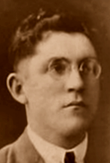 – Jose Valencia Gallardo, 27, born in Buenavista Tomatlán, Michoacan, was single.
– Jose Valencia Gallardo, 27, born in Buenavista Tomatlán, Michoacan, was single.
Consecrated to Christ and His Mother, at the age of 4, he was taken to a parish church in Buenavista by his own mother, Martina Gallardo, who forced him to kneel at the foot of the main altar where she said the following prayer:
“My Lord Jesus Christ, I offer you, as well as your beloved mother Maria, this dear fruit of my womb See it, my Lord and my God, I return him to you with all my heart, just as you have given him to me, to you who are the sovereign and the most loving father of the mother and the son; the only thing that I beg of you, the only one grace that I dare to ask of you, is that you deign to receive this little one, bathed in my tears and with your holy baptism, the number of your servants and your friends, and that you give him your holy blessing.”
As a young man, he found employment as headmaster of the children’s day school and the adult night school, in El Ebano, San Luis Potosi, where local authorities pushed Communist ideology among the workers. Undeterred, he found it an opportunity to teach catechism to combat the Socialist propaganda; however, when the local political boss heard about it, he began secretly agitating a struggle against the young teacher, using workers and children who attended Valencia Gallardo’s lectures and classes.
One night, a group of overwrought young men demanded that they be allowed to use the school auditorium for a dance. When refused, they attacked Valencia Gallardo, raged that he was a “fanatical professor,” dragged him to the outskirts of the village, beat him and tied him up. Subsequently, night after night, they attacked his home. Then the Socialists agitated school boys, who verbally attacked their teacher, calling him a “corrupter of morals,” because for Socialists, Catholicism is a corrupter of the Socialist morals. He endured all in silence.
In 1924, the young teacher left El Ebano and was hired – upon the recommendation of San Luis Potosí Bishop Miguel María de la Mora y Mora – as a professor at the Catholic College of Leon, where he became the regional delegate of the National League for the Defense of Religious Liberty.
Valencia Gallardo also had a literary bend, publishing his own newspaper, The Voice of the People, and a monthly magazine, Argos, which denounced the enemies of Christ, encouraged the combat against them in defense of Christ and of His Church, documented the government’s persecution of Catholics, and reported the closure of churches, convents, religious communities, welfare asylums and Catholic schools.
On Sunday, January 2, to prepare for the impending battle, Valencia Gallardo received Communion late in the day. The last time he saw his mother, who knew nothing of the coup, he asked for her blessing and then kissed her goodbye.
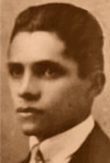 - Salvador G. Vargas, 20, was single.
- Salvador G. Vargas, 20, was single.
Submissive to the will of God and accepting of the Catholic duty to his station in life, he contentedly worked in a shoe manufacturing plant, where he served as a model of virtue and shared his faith with co-workers, drawing many deeper into the Church.
Although vulnerable to temptations, he maintained his virtuous chastity, embraced piety at a young age, nurtured a devotion to the Holy Mother and humbly and respectfully received daily Communion, from which he drew his strength.
Hungry for the intellectualism of the Church, he compiled his own library with books on religion, morals, Christianity and history, which helped deepen his knowledge through reading and meditation on the Truth. As a member of the ACJM, he learned not only the philosophical dogma of the freedom of the Church, but he also learned the apologetics on how to defend Her.
A good friend of and assistant to Valencia Gallardo, the two worked closely together to defend and fight for the Church.
On August 29, 1926, Valencia Gallardo sent Vargas to Teatro Doblado. His mission: encourage those who stood in line at the ticket box office to refrain from going into the theater, to participate in the anti-government boycott declared weeks earlier by the League. At noon, in front of the theater, he was arrested, which caused a riot by outraged Catholics storming the streets. Soon released, the rioters greeted Vargas, who – while still at the jail’s threshold – shouted, “Viva Cristo Rey!” to which celebrants replied, “Viva al Rey de Reyes!” They picked him up like a war hero and carried him around while shouting and cheering.
The night before the planned coup, a friend asked him, “And what are your chances of triumph?”
“I believe that we will die,” he confided. “We will not see the triumph, but Mexico needs blood, a lot of blood for its purification. I assure you that the triumph will come. Christ will receive the tribute that is due to Him. I assure you, as certain as I am here alive and tomorrow dead.”
Dedicated to duty, he was an obedient and affectionate son. When he left his home for the last time, at noon, he gently said good bye to his mother.
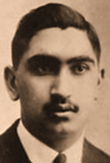 – Nicolas Navarro, 20, born in El Coecillo District of Leon, Guanajuato, was married, with one son.
– Nicolas Navarro, 20, born in El Coecillo District of Leon, Guanajuato, was married, with one son.
After fasting all day January 1, he received Communion the next day, after which he received the blessing of his parents; however, before he left to take part in the coup, his young wife of two years frantically begged him to reconsider his decision.
“What! it doesn’t hurt to leave your son and me!” she cried, pointing to their son.
Standing up, he answered, “No. First, I must defend the cause of God, and if I had 10 children, I would leave all 10 for God. When my son grows up, you will tell him that his father died for defending his religion.”
 – Ezequiel Gomez, 23, born in Leon, Guanajuato, was single, dating a devout Catholic but put marriage plans on hold while he fought for the freedom of the Church.
– Ezequiel Gomez, 23, born in Leon, Guanajuato, was single, dating a devout Catholic but put marriage plans on hold while he fought for the freedom of the Church.
A loving and devoted son, he happily worked in a foundry to support the family after his father died. With a joyful nature and a youthful enthusiasm, he easily made friends. A pious Catholic in private and public, he taught catechism each Sunday to children.
To prepare for the coup, he fasted, prayed and received Holy Communion.
When he left his home the final time, he revealed to his mother, “I want to die, because I know that the Lord wants my blood to save the country.”
Not much is known of the following three:
– Jose Vazquez, 35, born in Ibarilla District of Leon, Guanajuato, was married, worked as a muleteer and also earned money on sailboats;
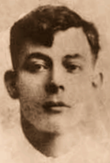 – Agustin Rios, 21, born in El Coecillo District of Leon, Guanajuato, was married, with a 2-year-old son;
– Agustin Rios, 21, born in El Coecillo District of Leon, Guanajuato, was married, with a 2-year-old son;
– And AJ Isabel Juarez.
The captives were lined up, tied up and escorted to El Coecillo Police Station, where the Catholic men – considered by authorities as enemies of the State – were loaded into a truck called La Julia, which traveled down Calle San Francisco de Asis, over a bridge and continued through Santiago to a destination where they were to be interrogated.
For the occasion, a War Council had been formed ad hoc and consisted of: Ramon Velarde (president of the civil administration board), Jose Rodriguez C. (professional politician), Pascual Urtaza Gutierrez (professional politician), Antonio Galvez (paid false witness), J. Natividad Lopez (Leon police inspector) and several others.
Natividad Lopez, like Torres, had been invited to join the coup, although those who invited him were warned against it, because he was part of the government, all considered traitors and scoundrels. However, for some reason, he was erroneously esteemed as a man of honor. With joy, not only did he accept the invitation to join the movement, but he also promised to bring an additional 40 armed and mounted rural and urban forces. His only stipulation: He wanted the rank of colonel.
Captain Alcantara – head of the garrison – had been contacted to form part of the War Council; however, when he recommended that the captives be transported to the Guanajuato Operation Headquarters, his suggestion was completely rejected.
During questioning, the devout Catholics all declared that they had planned the coup to gain freedom for the Church and for their country. The written admissions that they signed were simple declarations of faith and conviction.
With confessions in hand, Velarde, head of the War Council, rendered a verdict in the kangaroo court: The men were rebels and should be shot.
Alcantara refused to execute the order. He explained that he needed the directive to come from Guanajuato Operation Headquarters and insisted that the accused be placed at their disposal.
“Nothing is going to be made available to anyone. What is not done hot, is not done later,” argued Rodriguez.
And, so, it was decided.
Lined up and tied together once again, the prisoners were escorted at gunpoint down Boulevard Miguel Hidalgo and led back to La Brisa.
As preparations were being made to execute the men, Valencia Gallardo stood up majestically in the terrifying situation and faced his executioners, reprimanding them with kindness and integrity, and, at the same time, encouraging his companions to be strong, for they deserved the reward that God and his Holy Mother would bestow upon them in Heaven.
Valencia Gallardo’s final words were to ask his companions to die with an ending prayer: “Viva Cristo Rey! Viva la Virgen de Guadalupe!” But he was not able to finish the prayer, because when the members of the War Council heard the name of Christ, they brutally attacked him and ripped his tongue from his mouth.
“Now, speak!” they mocked.
Determined to show his faith, with superhuman strength, Valencia Gallardo rose, loosened the binds from his hands and pointed one finger to Heaven.
Enraged by his faith, his executioners fired their guns at him, and he fell to the dirt-covered earth below. A soldier stood over the fallen Catholic and smashed his skull.
When one of the torturers tried to grab a document from Navarro, who suffered from stab wounds, he reacted by successfully swallowing the evidence.
Enraged, his attackers beat him until they broke his teeth and blood flowed from his eyes.
But he still managed to encourage the others: “Courage, comrades, remember the cause we defend! Yes! You die for Christ, who never dies! Viva Cristo Rey!”
Overcome with hatred, the executioners stabbed him twice more and then raised and pointed their guns at the others
“Viva Cristo Rey!” shouted Gomez, Rios and Vazquez, as Vargas shouted with all his might: “For God! and for His Glory!”
Shots sounded through La Brisa.
The martyrs fell to the ground.
All died except one: AJ Isabel Juarez. Although shot along with his fellow Catholics, he was the only one to escape, the only living witness to spread the truth about the mass executions of the six martyrs of Leon: Jose Valencia Gallardo, Salvador G. Vargas, Nicolas Navarro, Jose Vazquez, Agustin Rios and Ezequiel Gomez.
At 5 a.m., acejotaemeros from the surrounding areas entered the city of Leon, and, as previously agreed upon, captured the plaza, the barracks and the police station; however, since the coup in La Brisa had failed, they had to retreat. During the attack, Benito Puente and Epifanio Sanchez perished.
Triumphantly, the Christophobic members of the War Council dragged their victims’ bodies – which revealed the horrors of the tortures – to the door of the municipal palace, originally the Grand Seminary College for Pauline Priests.
Dumped unceremoniously upon the ground, the martyrs were to serve as a chilling warning – reminiscent of Lenin’s shock tactics in Russia – to terrorize and to instill fear into the Catholics of Mexico.
* * *
Miscellanea and facts were pulled from the following: “Los Martires de Cristo Rey,” by Andres Barquin y Ruiz, with prologue by the Most Reverend Jose de Jesus Manriquez y Zarate, Bishop of Huejutla, 1937.
Theresa Marie Moreau, an award-winning reporter, is the author of Martyrs in Red China; An Unbelievable Life: 29 Years in Laogai; Misery & Virtue; Blood of the Martyrs: Trappist Monks in Communist China, and the forthcoming Cristero War: Mexican Martyrs.
No comments:
Post a Comment
Comments are subject to deletion if they are not germane. I have no problem with a bit of colourful language, but blasphemy or depraved profanity will not be allowed. Attacks on the Catholic Faith will not be tolerated. Comments will be deleted that are republican (Yanks! Note the lower case 'r'!), attacks on the legitimacy of Pope Leo XIV as the Vicar of Christ, the legitimacy of the House of Windsor or of the claims of the Elder Line of the House of France, or attacks on the legitimacy of any of the currently ruling Houses of Europe.